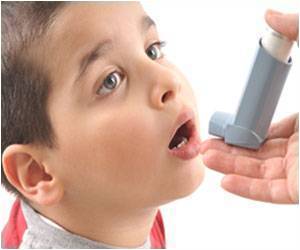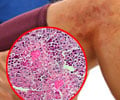Living closer to a park can benefit children with asthma, especially older children who are more likely to go to the park on their own.

‘On an average, children living next to the park had five symptomatic days, whereas a child living only 152 meters from the park had six symptomatic days.’





The study will be presented by Kelli DePriest a public health nurse who carried out the work as part of her PhD programme with primary investigator Dr Arlene Butz and colleagues at Johns Hopkins University School of Nursing and Medicine and the University of Maryland School of Medicine, Baltimore, USA.She will tell the congress: "Living in a city environment increases the risk of childhood asthma, and factors associated with city-living - such as air pollution- are also known to contribute to high rates of poorly controlled asthma.
"However, previous research has suggested that children with asthma can benefit from exercise. The presence of green spaces promotes physical activity and helps to lower pollution."
The researchers wanted to see whether something as simple as living close to a park could help children suffering from poorly controlled asthma who live in the city of Baltimore, USA. Baltimore is a city of around 620,000 people, with levels of pollution similar to New York and Los Angeles, but slightly lower than those in London and Milan.
Researchers interviewed the parents of 196 children, aged between three and 12, all of whom had either visited accident and emergency at least twice or been hospitalized for their asthma over the past year.
Advertisement
Researchers asked parents how many days each child had suffered with symptoms such as being short of breath, chest pain and wheezing. At the same time, they mapped the distances between the children's home addresses and the closest green space.
Advertisement
The research revealed that children had one extra day when they suffered with asthma symptoms for every 305 meters between their home and the park. For example, a child who lives next to a park had an average of five symptomatic days and a child living 305 meters from the park had six symptomatic days. Among older children, those living next to the park had an average of five symptomatic days, whereas a child living only 152 meters from the park had six symptomatic days.
DePriest says: "The effect looks strongest for children aged six years and older. This might be because they have more freedom to choose where they want to go compared to younger children.
"These results are important because they provide further support for the benefits of city parks, and they suggest that the right building policies can improve children's health.
"They will also help healthcare providers to take a more holistic view of their patients by understanding how access to green space might affect health."
The results come as the European Respiratory Society and European Lung Foundation launch their annual Healthy Lungs for Life campaign with a series of events for the public and health professionals focusing on air pollution, occupational exposure and smoking cessation.
DePriest plans to expand on her research by analyzing relationships among varying forms of green space, including parks but also backyards and gardens, and how this relates to children's asthma symptoms.
Source-Eurekalert














